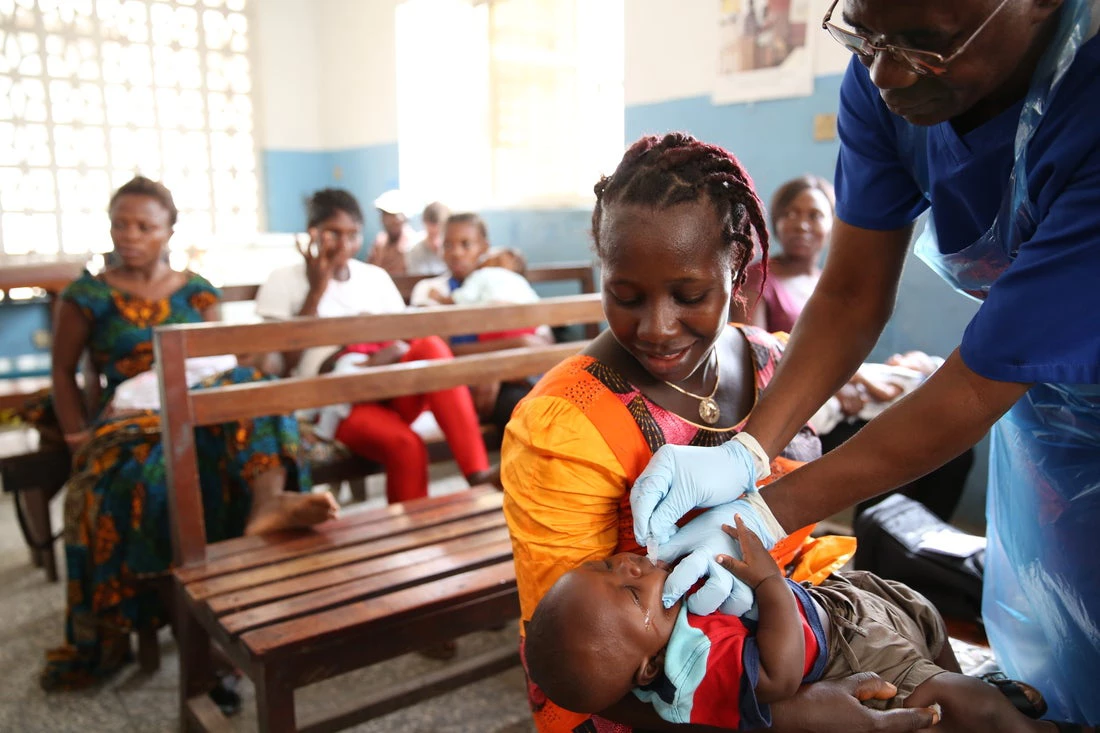This blog is based on new child mortality estimates released on March 13, 2024 by the United Nations Inter-agency Group for Child Mortality Estimation (UN IGME).
In 2022, the number of children who died before their fifth birthday worldwide reached a historic low level, according to a recent United Nations Inter-agency Group for Child Mortality Estimation (UN IGME) report. Since 2000, the global under-five mortality rate (U5MR) has declined by more than half, from 76 per 1,000 live births to 37 per 1,000 live births, the estimates show.
Despite progress being made, an estimated 4.9 million children died in 2022. The report warns that the progress has come too late for many, and there is still a long road ahead to ending preventable child deaths—which have accumulated 162 million deaths of children under-five between 2000 and 2022.
Of the 4.9 million under-five deaths, 2.3 million occurred during the first month of life (neonatal deaths), and 2.6 million between the ages of 1 month and 59 months. Child deaths are increasingly concentrated in the neonatal period when deaths are often caused by conditions that require functioning health care systems such as prematurity and intrapartum events (birth trauma and birth asphyxia).
The loss of those children must not be forgotten or overlooked, where the knowledge and interventions to lower this number are available, the report says. This tragic loss of life is primarily due to preventable or treatable causes.
Unequal distribution: What are the main variables?
Significant disparities exist in survival based on where children live, their socioeconomic status and if they live in a fragile and conflict-affected setting.
These deaths are not distributed equally around the world. In 2022, the under-five mortality rate in low-income countries was 65 deaths per 1,000 live births, which was 13 times the under-five mortality rate in high-income countries.
Children who live in countries in fragile and conflict-affected situations (FCS) are especially vulnerable to mortality. The under-five mortality rate in the 39 countries classified as FCS by the World Bank was estimated at 73 deaths per 1,000 live births in 2022, a nearly three times that of all other countries not classified as FCS. About 48 per cent of global under-five deaths in 2022 occurred in FCS countries, while just 25 per cent of live births occurred in these countries.
Need to accelerate progress to reach SDGs
The Sustainable Development Goals (SDGs) call for all countries to reach an under-five mortality rate of at least as low as 25 deaths per 1,000 live births by 2030. If current trends continue, 59 countries will not meet the SDG target for under-five mortality.
Forty three of the 59 countries that are off track to meet the SDG target will need to more than double their current rate of progress or reverse an increasing trend and then accelerate progress to achieve the SDG target by 2030. Among the 59 countries, 26 of them (44 per cent) are classified as FCS.
If current trends continue, roughly 35 million children will die before turning 5 between 2023 and 2030, with about half of these deaths occurring among newborns. However, if countries at risk of missing the SDG target on under-five mortality accelerate progress and achieved it on time, nearly 9 million child lives could be saved between by 2030.
What is being done?
The World Bank, the Global Financing Facility (GFF), UNICEF, World Health Organization, and United Nations have been supporting countries to build primary healthcare systems that meet the needs of women, children, and adolescents, with a concerted effort to reduce preventable deaths.
Healthy lives depend on person-centered primary health care that can be delivered in communities through high-quality services available as part of a well-functioning health care system. Increased access to family planning and equitable access to antenatal care, postnatal care for mother and newborn, especially, care for small and sick newborns, immunization against infections of childhood, treatment for childhood illnesses, and nutrition services, where needed, would vastly improve the likelihood that all children will survive to their fifth birthday and beyond.
The importance of quality data: Persistent data gaps in child mortality
The report also notes gaps in child mortality data and statistical systems in countries. Data are least available in the countries where children face the highest risks of death. Data availability declines by World Bank income group, in countries classified as FCS, and among countries at risk of missing the SDG targets on child mortality. Data and statistical systems must be improved to track and monitor the well-being of children and to help identify where resources and interventions should be targeted.
These mortality estimates were produced by the UN IGME. The UN IGME includes UNICEF, the World Health Organization, the World Bank Group, and the United Nations Population Division as full members. The group was formed in 2004 to share data on mortality, harmonize estimates within the UN system, improve methods for child mortality estimation, and to report on progress towards the child survival goals. The group continues to produce reliable and transparent mortality estimates to track countries’ progress towards SDG target 3.2. All data, estimates, and details on methods are available on the UN IGME’s Child Mortality Estimates website. The new estimates will become also available in the World Bank’s World Development Indicators and Health databases.











Join the Conversation